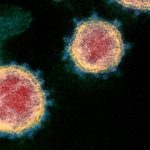1. The bivalent omicron-containing coronavirus 2019 disease (COVID-19) vaccine has a similar safety profile to previous mRNA vaccinations.
2. The bivalent vaccine also elicits a noninferior immunogenic response as compared to previously approved vaccines.
Evidence Rating Level: 2 (Good)
Study Rundown: The emergence of COVID-19 variants conferring increased immunologic escape or transmissibility compared to ancestral COVID-19 has prompted the development of new booster vaccines. The bivalent vaccine contains equal parts spike proteins against both the omicron variant BA.1 and the ancestral COVID-19 strain. The present study compared the bivalent vaccine to the original booster vaccine in adults who have had two doses of primary vaccination and a first booster dose. It primarily aimed to understand the bivalent vaccine’s safety profile and the bivalent vaccine’s ability to elicit neutralizing antibody responses compared to the original COVID-19 vaccine. Results found that the bivalent vaccine had a similar safety profile to the original booster vaccine against COVID-19 without any additional serious adverse reactions, fatal reactions, or severe reactions requiring discontinuation of the study. The bivalent vaccine also elicited enough neutralizing antibody responses within participants who received it to be considered noninferior to the original booster vaccine against COVID-19. The major limitations of this study were that it was not randomized, the follow-up time was limited, and vaccine efficacy was not fully assessed. This study provided evidence of an acceptable safety profile and immunogenicity reaction of the bivalent vaccine.
Click to read the study in NEJM
In-Depth [open-label trial]: The current study was an open-label, phase 2 to 3 study evaluating the safety profile, immunogenicity, and reactogenicity of 50-ug of the bivalent Omicron-containing vaccine (mRNA-1273.214). Follow-up was done at 28-days and it was administered as a second booster dose for adults who had completed a two-dose primary series. Participants with a prior known history of infection 3-months prior were excluded. Of the 819 participants, 437 were assigned to receive the bivalent vaccine, and 377 were assigned to receive the mRNA-1273 vaccine as a second booster dose. The primary objectives were to evaluate adverse reactions 28-days after booster administration. Primary results of the safety analysis found that injection-site pain, fatigue, headache, myalgia, and arthralgia were the most frequently reported adverse reactions. The incidence of these was similar between the bivalent vaccine and mRNA-1273 vaccine groups. No serious adverse reactions considered related to study vaccination were reported, and no fatal reactions were reported. Two participants each from the bivalent vaccine group (0.5%) and the mRNA-1273 group (0.5%) experienced systemic adverse reactions requiring medical attention (hypertension and urticaria). Primary results of the immunogenicity analysis found an estimated adjusted geometric mean titer ratio between the bivalent booster and mRNA-1273 booster of 1.22 (97.5% Confidence Interval [CI], 1.08 to 1.37) against ancestral SARS-Cov-2 and 1.75 (97.5% CI, 1.49-2.04) against omicron, satisfying noninferiority of the bivalent vaccine. In summary, the bivalent booster demonstrated similar efficacy and safety profiles to previous COVID-19 boosters.
Image: PD
©2022 2 Minute Medicine, Inc. All rights reserved. No works may be reproduced without expressed written consent from 2 Minute Medicine, Inc. Inquire about licensing here. No article should be construed as medical advice and is not intended as such by the authors or by 2 Minute Medicine, Inc.


